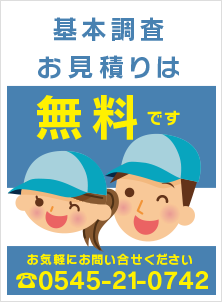ブログ
-
j$k5241411j$k
Easyroommate Licence Agreement: What You Need to Know
Renting a room in your house or apartment can be a great way to earn extra income and make use of underutilized space. However, it’s important to have a clear and well-defined agreement in place to ensure a positive experience for both you and your tenant. One commonly used agreement is the Easyroommate Licence Agreement. In this article, we’ll take a closer look at what this agreement entails and why it’s important.
What is an Easyroommate Licence Agreement?
An Easyroommate Licence Agreement is a legal document that outlines the terms and conditions of renting out a room or rooms in your home to a tenant. The agreement is designed to protect both parties and ensure that everyone is clear on their rights and responsibilities. It covers a variety of topics, including rent, utilities, security deposits, and house rules.
Why is an Easyroommate Licence Agreement important?
There are several reasons why having an Easyroommate Licence Agreement is important:
1. Clarity – The agreement clearly outlines what is expected of both parties, which helps to avoid confusion and misunderstandings.
2. Protection – The agreement protects both the landlord and the tenant by ensuring that everyone’s rights and responsibilities are clearly defined.
3. Legal requirements – Depending on where you live, there may be legal requirements for renting out a room. An Easyroommate Licence Agreement can help ensure that you comply with these requirements.
4. Peace of mind – Having an agreement in place can provide peace of mind for both parties, knowing that there is a clear and fair framework for the tenancy.
What does an Easyroommate Licence Agreement cover?
An Easyroommate Licence Agreement typically covers the following topics:
1. Rent – The agreement should specify how much rent will be paid, when it is due, and how it will be paid.
2. Utilities – The agreement should specify who is responsible for paying for utilities, such as electricity, water, and gas.
3. Security deposit – The agreement should specify how much the security deposit is, when it is due, and what it covers.
4. House rules – The agreement should outline any rules that the tenant is expected to follow, such as quiet hours or restrictions on guests.
5. Termination – The agreement should specify how either party can end the tenancy and what notice is required.
It’s important to note that an Easyroommate Licence Agreement is not a tenancy agreement. Rather, it is a licence agreement that gives the tenant the right to occupy the room or rooms in your home. This means that the agreement is generally less complicated than a tenancy agreement, which can be advantageous for both parties.
Conclusion
If you’re considering renting out a room in your home, it’s important to have a clear and well-defined agreement in place. An Easyroommate Licence Agreement is a commonly used agreement that can help ensure a positive experience for both you and your tenant. By outlining the terms and conditions of the tenancy, the agreement can provide clarity, protection, and peace of mind for both parties.
-
j$k5019438j$k
The African Continental Free Trade Agreement (AfCFTA) is one of the most significant trade agreements on the African continent. It aims to create a single continental market for goods and services, as well as free movement of business persons and investments. The AfCFTA was signed by 44 African countries in March 2018 and came into force on January 1, 2021. It has the potential to boost intra-African trade, increase economic growth, and create job opportunities across the continent.
As of August 2021, 54 African countries have signed the AfCFTA agreement, with 38 countries having ratified it. The following are the countries that have ratified the agreement:
1. Algeria
2. Angola
3. Benin
4. Burkina Faso
5. Burundi
6. Cabo Verde
7. Cameroon
8. Central African Republic
9. Chad
10. Comoros
11. Congo
12. Côte d`Ivoire
13. Djibouti
14. Egypt
15. Equatorial Guinea
16. Eswatini
17. Ethiopia
18. Gabon
19. Gambia
20. Ghana
21. Guinea
22. Guinea-Bissau
23. Kenya
24. Lesotho
25. Liberia
26. Libya
27. Madagascar
28. Malawi
29. Mali
30. Mauritania
31. Mauritius
32. Mozambique
33. Namibia
34. Niger
35. Nigeria
36. Rwanda
37. Sahrawi Arab Democratic Republic
38. São Tomé and Príncipe
39. Senegal
40. Seychelles
41. Sierra Leone
42. Somalia
43. South Africa
44. South Sudan
45. Sudan
46. Tanzania
47. Togo
48. Tunisia
49. Uganda
50. Zambia
51. Zimbabwe
The AfCFTA is expected to eliminate tariffs on goods traded between African countries, providing a boost to intra-African trade. The agreement also seeks to address non-tariff barriers, such as bureaucratic hurdles and corruption, that have hindered trade on the continent. In addition to trade in goods, the AfCFTA also covers trade in services, investment, intellectual property rights, and competition policy.
By creating a single market, the AfCFTA is expected to increase competition, reduce prices of goods and services, and provide greater choice to consumers. It is also expected to attract more foreign investment into the continent, create jobs, and promote sustainable development.
In conclusion, the African Continental Free Trade Agreement is a game-changer for the continent`s economy. With 38 countries having ratified the agreement, the AfCFTA has the potential to create a single continental market, provide new trade opportunities, and help African countries move up the value chain. As the agreement continues to be implemented, it is expected to drive economic growth and development across the continent, creating a more prosperous future for all Africans.












